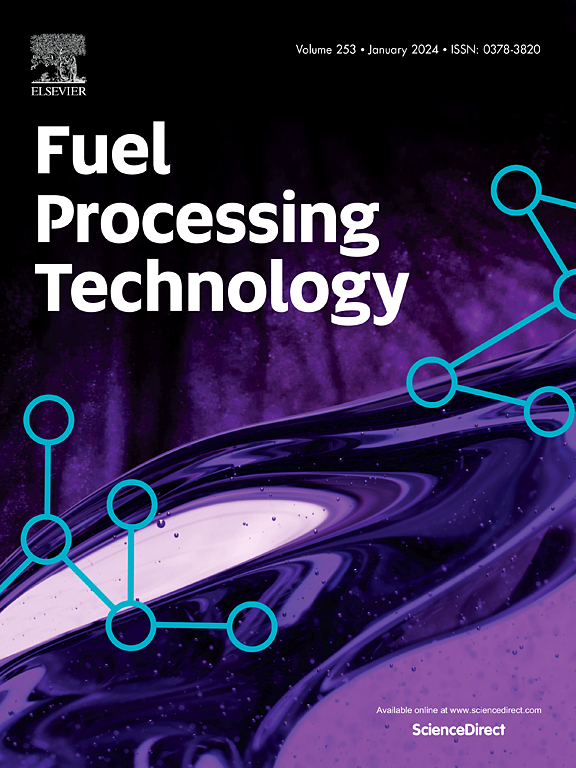甲醇燃料发动机的甲醇和甲醛排放机理
IF 7.2
2区 工程技术
Q1 CHEMISTRY, APPLIED
引用次数: 0
摘要
甲醇作为一种低碳燃料,在发动机上有着广阔的应用前景。在甲醇预混燃烧试验台(PCTB)和304不锈钢流动反应器(SFR)上分别研究了甲醇和甲醛的燃烧机理。PCTB实验结果表明,甲醇不能从火焰表面逸出形成未燃烧的甲醇排放物。当甲醇气体进入上游排气系统时,甲醇在排气系统中部分氧化为甲醛。SFR结果表明,甲醇氧化的起始温度约为628 K。从628 ~ 950 K,随着温度的升高,甲醇浓度迅速下降。随着温度的升高,甲醛先升高后降低。甲醛浓度在临界温度时达到最大值。在8、12、16、20和24 m/s流速下,临界温度分别为812、823.4、830、845.5和850 K。本研究探讨了甲醇和甲醛在不同温度、流速和氧浓度下的机理,并为甲醇发动机的甲醇和甲醛排放控制提供了有价值的见解。本文章由计算机程序翻译,如有差异,请以英文原文为准。
Mechanism of methanol and formaldehyde emissions from methanol-fueled engines
Methanol, as a low-carbon fuel, has broad application prospects in engines. The mechanism of methanol and formaldehyde was investigated respectively in a methanol premixed combustion test bench (PCTB) and a 304 stainless-steel flow reactor (SFR). The results of PCTB indicate that methanol cannot escape from the flame surface to form unburned methanol emissions. Methanol was partially oxidized to formaldehyde in the exhaust system when methanol gas is fed into the upstream exhaust. The results of SFR indicate that the onset temperature of methanol oxidation is approximately 628 K. The methanol concentration decreases rapidly with increasing temperature from 628 to 950 K. Formaldehyde increases firstly and then decreases with increasing temperature. The concentration of formaldehyde reaches the maximum at the critical temperature. At flow velocities of 8, 12, 16, 20 and 24 m/s, the critical temperature is 812, 823.4, 830, 845.5 and 850 K, respectively. This work investigates the mechanism of methanol and formaldehyde at different temperatures, flow velocities, and oxygen concentrations, and provides valuable insights into the control of methanol and formaldehyde emissions from methanol engines.
求助全文
通过发布文献求助,成功后即可免费获取论文全文。
去求助
来源期刊

Fuel Processing Technology
工程技术-工程:化工
CiteScore
13.20
自引率
9.30%
发文量
398
审稿时长
26 days
期刊介绍:
Fuel Processing Technology (FPT) deals with the scientific and technological aspects of converting fossil and renewable resources to clean fuels, value-added chemicals, fuel-related advanced carbon materials and by-products. In addition to the traditional non-nuclear fossil fuels, biomass and wastes, papers on the integration of renewables such as solar and wind energy and energy storage into the fuel processing processes, as well as papers on the production and conversion of non-carbon-containing fuels such as hydrogen and ammonia, are also welcome. While chemical conversion is emphasized, papers on advanced physical conversion processes are also considered for publication in FPT. Papers on the fundamental aspects of fuel structure and properties will also be considered.
 求助内容:
求助内容: 应助结果提醒方式:
应助结果提醒方式:


